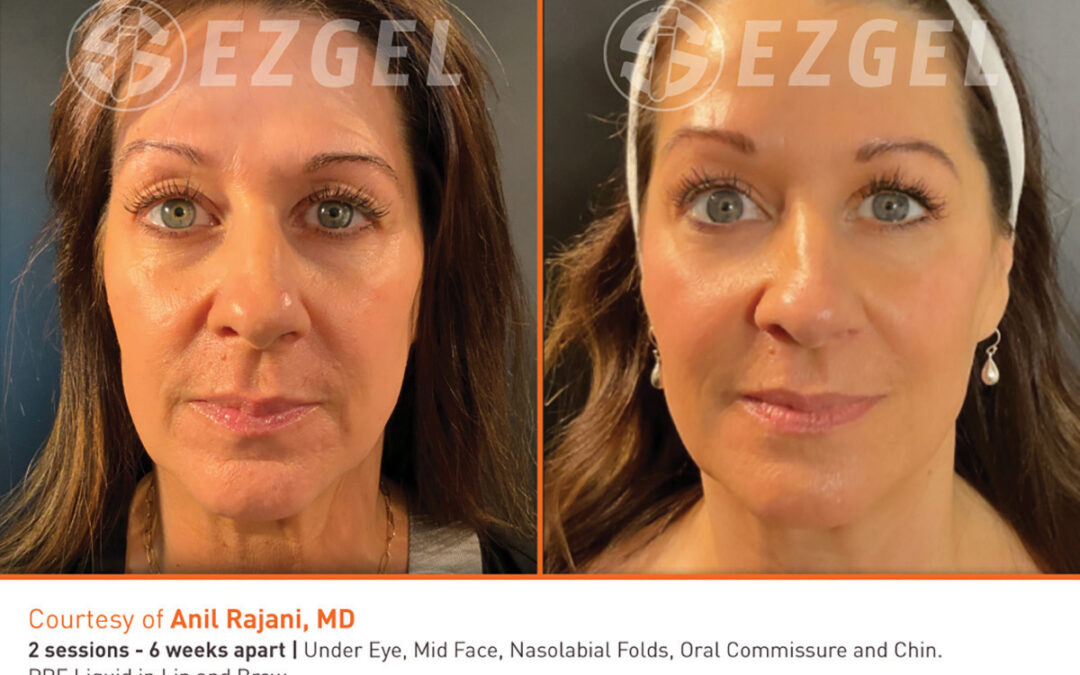Our skin is a wonderful, flexible, protective covering. It can be beautifully soft and touchable or rough, leathery, wrinkly and sagging. UV rays from the sun or tanning booth and smoking are the major causes of damage and deterioration of our skin. So why not take care of it? Caring for our skin should start when we are very young by wearing a sunscreen product and should remain as a part of skin care throughout our lifetime. Through the aging process, we lose collagen and elastin, proteins that keep our skin hydrated and comprise the foundation of our skin. As our skin changes, so should our skin care regimen.
And so it begins
During our teeny-bopper years, our skin takes on a life of its own because of hormonal changes. A visit to the dermatologist might be required to help stave off skin problems. About age 30, our complexions might look a little scruffy, uneven, with less “glow” and a few crow’s feet around our eyes. The fight is on.
The war on anti-aging
With the 40s can come additional wrinkles in additional places — around the mouth, the forehead and the eye areas. 0ur skin texture might change, becoming drier and/or duller. Our skin and makeup products will need to have more hydrating properties. In the 50s and 60s, we look into the mirror and see … jowls! Our skin gets droopier, our wrinkles get deeper, and some age spots may appear. Some vitamins and other antioxidants can help us protect our skin by fighting free radicals and helping rebuild cells for renewed skin.
Skin Care
As early as 500 B.C., Greeks and Romans visited bathhouses for pleasure and relaxation. The relaxing, revitalizing and socializing aspects of communal bathing eventually spread throughout Asia, Europe, Africa and North America. In 1522, scientific studies of the healing powers of drinking and bathing in natural hot springs containing various minerals were conducted in Europe. Later, luxurious spa retreats sprang up in the United States and abroad, where the wealthy could go for vacations, weight loss and the health benefits derived from the hot springs.
In San Antonio, where we had our own hot springs for many years, we have access to many spas featuring a wide variety of services and treatments. And you don’t have to be a bazillionaire to use them. Our skin can be scrubbed, peeled, waxed, steamed, >detoxed, hydrated and beautified. We can make an appointment for a wide variety of facials, body massages and body wraps, most with catchy names and exotic ingredients like lemongrass, coffee, honey and sea stuff, each promising to offer you a wonderful experience. Massage therapy can help reverse our sun-damaged skin, enhance our circulation for clearer, healthier skin, stimulate our sweat glands to regulate our body temperature, help clear our pores by releasing toxins from our body, increase oxygen to our body and more — all adding up to healthier skin, healthier you.
Choosing a spa and spa etiquette
In addition to services offered, look for cleanliness and a relaxed, tranquil atmosphere. Treatments should start on time. Therapists should be professional, courteous and sensitive to pressure exerted for your situation and tolerance. Modesty should be preserved. You should never be touched in a “sexual” way. If you feel uncomfortable, speak up. You should not be left alone during some treatments, especially those involving heat or steam. Aestheticians should inform about skin care but should not pressure you to buy products. Be sure to check out cancellation policies, as you might be charged for arriving late or missing appointments. Spa treatments usually include massages, facials and perhaps manicures, pedicures and hair care services, and some offer less common services such as hydrotherapy, acupuncture, Moor mud wraps, reflexology and more.
First time at a spa? Feel free to ask questions, tour facilities, inquire about various treatments. Always arrive early to enjoy a shower, sauna or hot tub prior to treatments. You’ll have use of a locker with key, a robe and slippers while having your treatments. Your therapist will guide you through each phase of your procedure and leave the room while you are dressing or undressing and getting between the sheets on the comfortable table. There will probably be soft music and low lighting as well.
TREATMENTS
Facials include cleansing, exfoliating, massaging and applying creams to hydrate your face and neck skin. Masques customized for your skin are widely available. Maybe you’d like a facial including additional vitamins and minerals, oxygen or collagen products to plump or rejuvenate your skin. Or you can choose a warm mud or paraffin skin-balancing masque. Anti-inflammatory extracts or calming ingredients can be added to treat rough, sun-damaged, sensitive or acne-prone skin. Peels can remove dead skin cells and fine lines. Ultrasonic waves can penetrate the skin to promote cellular renewal, tone and tighten sagging. “Manly” facials will tone, condition and soothe irritation resulting from shaving or sun exposure.
Body massage and treatments are like a facial for your whole body. Starting with an exfoliation using a mixture of sea salt, ground coffee, grape or other seeds or other “interesting” elements and fragrant essential oils, you are treated to a Vichy shower as many jets rain water down on you while you lounge on a specially designed mattress. Next, choose one of the many types of massages, depending upon what you’re trying to accomplish. Do you seek spot pain relief, relaxation, toning, increased circulation, trigger point or acupressure-type massage? Do you require help to hydrate, tone and recondition your skin? Perhaps you would like to balance your body through reflexology.
Body masques and wraps also begin with the exfoliation process, after which a special mixture of mud or clay or seaweed is slathered over your entire body to draw out the toxins. Some spas add their own ingredients to make their own “signature” masque — things like eucalyptus, citrus fruits, pumpkin, sea algae, etc. If you’ve selected a body wrap, you’ll be enveloped in a thermal blanket to assist your skin absorption of the purifying nutrients. A Vichy shower follows to rinse off the materials used for the masque or wrap. A hydrating body masque or wrap treatment might use another creamy product in place of mud, such as one designed to treat cellulite. Maybe you’ll choose a wrap with a diuretic effect for a temporary weight loss — a favorite before a big night out. Body wraps are also thought to stimulate your metabolic system, aiding in the healing process as well. Sometimes spas add their own special ingredients to a masque substance to differentiate it from others. Examples include eucalyptus, milk and honey, citrus fruits, pumpkin and marine algae and sea salts in their body wraps, exfoliants and massages.
Training, certification and state board requirements for massage professionals
Since state boards and legislators are responsible for the public’s health and safety, it is important to have a certification program guaranteeing access to competent, ethical and professional massage and bodywork. Texas recognizes the National Certification Board for Therapeutic Massage and Bodywork (NCBTMB) exams in statute or rule. All modalities and disciplines are included in the certification program. Another reason to select a certified massage therapist is the ability to file a complaint if you feel your therapist has violated the code of ethics and/or standards of practice.
Ready to take advantage of spa treatments?
Check out www.SanAntonioSpas.com, it’s a great resource to find just the perfect place! You can find local spas, a menu of spa treatments offered and descriptions, sometimes prices plus locations and telephone numbers.









0 Comments